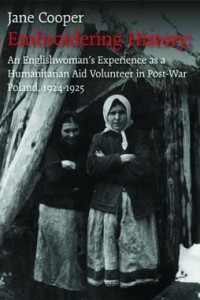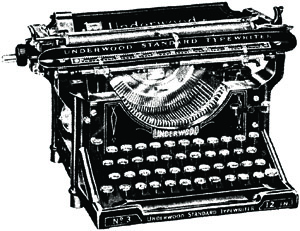Embroidering History: An Englishwoman’s Experience as a Humanitarian Aid Volunteer in Post-War Poland, 1924-1925

Jane Cooper’s book, Embroidering History, opens wide a window into the workings of an early humanitarian aid project in a complex emergency, namely the refugee crisis of Polish peasants from 1924-1925. Cooper has ably edited and annotated a collection of erudite correspondence written by a middle-class English aid worker by the name of Margaret Tregear.
Defying common convention regarding the role of women at the time, Tregear does what very few women dared do: she leaves the comforts of her home and her teaching position and ventures into rural village life in post-war Poland, where she volunteers with a Quaker project to provide income-generating work in the form of embroidery projects for refugee peasant women. During this period Tregear writes a set of letters about her experiences that serve as a kind of personal journal. She mails the letters to a group of her women friends who are dispersed across Europe and as far away as India. Thirteen of these letters are now deposited in the Library of the Religious Society of Friends in London.
Embroidering History will be welcomed by humanists, history enthusiasts, and those interested in the way the aid industry is evolving. It will also fascinate those of us who love to write journals; Tregear’s letters are exemplary, richly anthropological, and colorful in their detailed account of the human spirit. They also provide a glimpse into the inner workings of an early international development project, as she weaves together her own colorful embroidery portraying the trials and tribulations of her efforts and those of the peasants she tries to help.
Drought, famine, conflict, hunger, refugee crises, and the suffering and death of tens of millions have been a tragic fixture in the evolution of nations and societies. As you read this review, civilians are being attacked, bombed, and cut off from aid in Syria, Pakistan, Somalia, Yemen, Sri Lanka, Afghanistan, and the Democratic Republic of Congo. Incredulously, the Eastern the Congo has been called the “rape capital of the world” by U.N. Special Representative Margot Wallstrom, whose reports state that forty-eight women are raped every hour.
Compared to this bleak picture, the refugee crisis in Poland where Tregear volunteered may not seem singularly exceptional. “We run weavings as well as embroideries, but whereas over a thousand women take embroidery during the year, we only have about ten loom workers,” Tregear writes, describing the project. “We have two rooms in the village, one with four and the other with three looms, and have just set another up in the entrance to this house.” Hardly a bombastic undertaking.
Yet Tregear’s efforts remain noble even if her project may seem modest, and the difficulties she faces are very similar to those challenges faced by the modern aid practitioner in major disaster situations. In crises large and small, she has to muster all the courage and negotiation skills she possesses in order to identify the different motives and expectations of the people involved in her project—international staff, local staff, project beneficiaries, and local power brokers. Any modern aid worker knows how confusing it is to grope your way through the maze of stakeholders in the humanitarian network. The test of the humanitarian practitioner is to establish, together with the other parties, a work atmosphere conducive to the successful implementation of the aid program, commonly referred to by aid workers as “humanitarian space.”
Tregear learns an important lesson about the negotiation of humanitarian space when she finds that she is alienating her co-workers and beneficiaries by her ethnocentric and occasionally patronizing approach. This is evidenced in her entries where she describes how “sometimes [the peasants] crowd in [the meeting room] regardless of the numbers and refuse to stir—and then we have to treat them like naughty children, give them three minutes to get out and then anyone who is left in the room at the end of time gets no work or pay.” She goes on to reveal her mixed feelings and confusion about her Polish colleagues and her beneficiaries, who, while “too ignorant to know better…are really very likeable people, and have a great sense of humor, and sometimes they are so stupid that they are unconsciously funny. They do beautiful work though, and need the money that they get for it very badly.” Eventually, and due to the personal fallout she experiences in the wake of these episodes, Tregear becomes more sensitive to the ethnic and cultural mannerisms of her Polish hosts. She even realizes her shortcomings when she admits that “I’m glad this isn’t a concern being run for private profit and that I wasn’t born a businessman.” This concern over creating a more financially accountable humanitarian system remains a central preoccupation of the aid industry.
So how did Tregear’s project work out? Cooper offers a sobering and austere account of how “in 1939 war came again…[and] many of the Belarusian peasants who had struggled to rebuild their lives with the support of this project, lost everything again, became refugees again, and many died.” Does this mean the project failed?
 I suppose my answer would be that Tregear embodied what’s buried in all of us—the humanitarian impulse, the urge to do good, even if that good proves to be transitory. Margaret offered unqualified, short-term emergency relief to those in dire circumstances, and with time also learned to provide assistance while minimizing the negative side effects of her work. She had imbued the peasants in this remote region of Poland with purpose and dignity, and these traits remained in the collective conscience of this village, even in times of renewed hardship.
I suppose my answer would be that Tregear embodied what’s buried in all of us—the humanitarian impulse, the urge to do good, even if that good proves to be transitory. Margaret offered unqualified, short-term emergency relief to those in dire circumstances, and with time also learned to provide assistance while minimizing the negative side effects of her work. She had imbued the peasants in this remote region of Poland with purpose and dignity, and these traits remained in the collective conscience of this village, even in times of renewed hardship.
Relief work has long been subject to manipulation by governments, warlords, public opinion, disembodied realpolitik, and the calculations of humanitarians themselves. And yet, I feel emboldened as I picture Tregear lugging her typewriter (probably an Underwood, which was the most popular typewriter of the 1920s), laboring over her letters, editing her notes without the benefit of a laptop or other digital technology, lamenting, “I am afraid this won’t be an awfully long installment this time, as the typewriter has bust, and the little jigger that holds the ribbon gets stuck every two letters or so.”
The weight of her typewriter, and the poor quality of the ink ribbons did not prevent her from writing letters that speak to the humanitarian spirit. And through her letters, she has done us a great service, as has Jane Cooper in presenting us this book.
